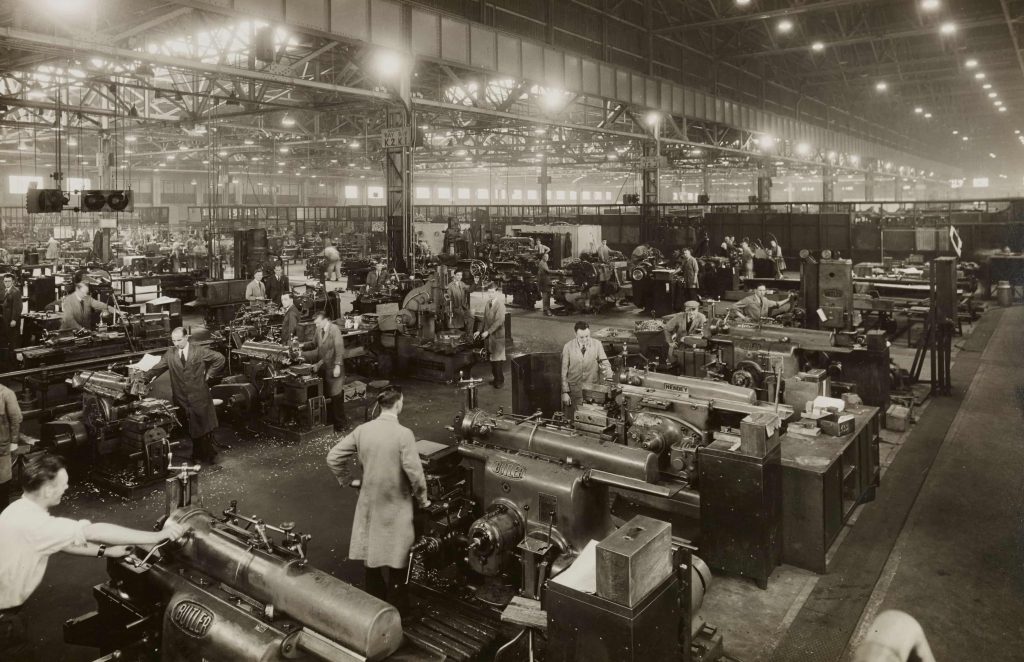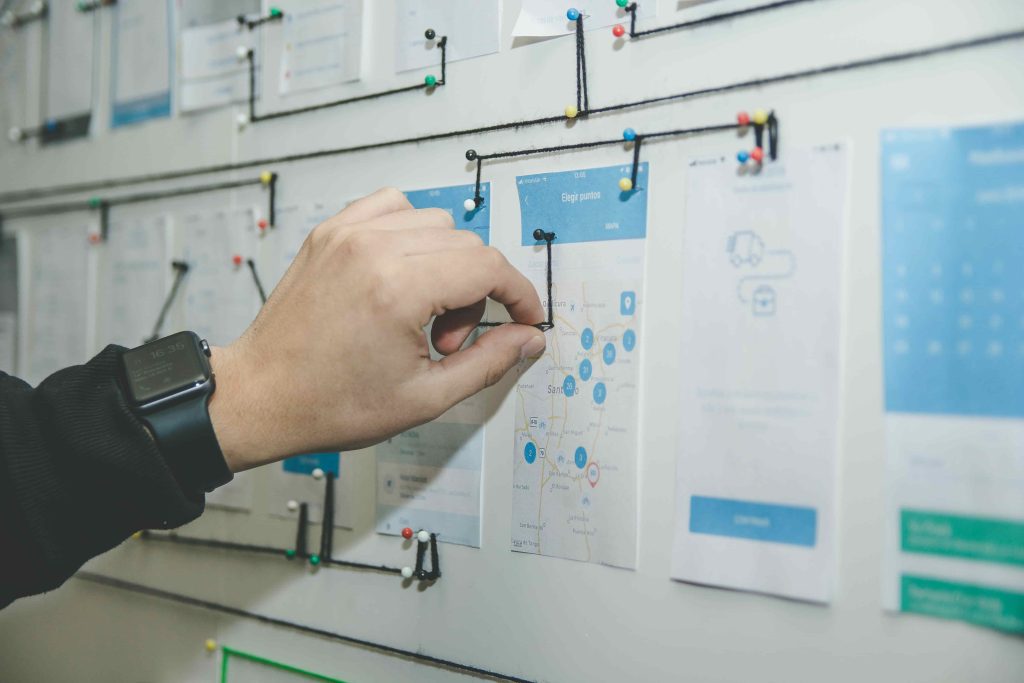Lean methodology: from industry to IT projects

Lean Manufacturing is a methodology for managing production processes that is designed to eliminate excessive costs and increase company efficiency. This concept originated in Japan after World War II, and since then it has gained wide recognition around the world. Now Lean methodology is applied not only in industry, but also in construction, logistics, public administration, and software development. In this article, we will look at the basics of lean manufacturing, its principles and advantages.
The main goal of lean manufacturing is to create maximum value for the customer at minimum cost. This is achieved by eliminating all types of wastage such as excess inventory, rework, waiting, etc. Emphasis is placed on creating a work flow that allows smooth operation at high capacity.
Lean manufacturing was developed on the basis of methods used in the Japanese automobile company Toyota in the 1950s. The introduction of this methodology into production processes allowed the automobile concern to significantly increase the speed of work, improve product quality, and reduce the company’s costs.

The central figures in this story were Taiichi Ohno and Eiji Toyoda, who made a decisive contribution to the development and implementation of Lean principles in the company. Toyoda had previously founded the Toyota Production System (TPS), which was the precursor to Lean.
The first companies to introduce Lean methodology outside Japan were Ford and General Motors. They invited Japanese experts to introduce Lean principles into their production processes. Over time, the methodology spread to all industries, including healthcare, education, and even the public sector. Many companies around the world successfully apply Lean principles to improve quality, reduce production time and optimize costs. The concept received its modern name only in the 1980s.

Lean principles
The philosophy, developed based on Toyota’s experience, covers 8 fundamental principles that form the basis of efficient production and management. To implement Lean methodology into work processes, it is necessary to understand the essence of all Lean tools. Let’s consider each of them in detail.
1. Value
The first and most fundamental principle of Lean is that all actions and processes should be designed to create value for the customer. It is important to realize that “value” is defined by the customer. Any activity that does not deliver value to the customer is considered a loss. Value creation is at the center of everything an organization does, and this principle is the foundation for all others.
2. Eliminate Waste
One of the basic principles of Lean is to eliminate all kinds of losses that do not add value to a product or service. These losses, called “Muda” in Japanese, include excess inventory, rework, waiting, unnecessary operations, defects, and others. Identifying and eliminating losses is key to improving efficiency and reducing costs.
3. Create Flow
To optimize processes, Lean recommends creating a smooth flow of work where tasks are performed without unnecessary delays or interruptions. This is achieved by eliminating bottle necks in production or work processes and organizing activities so that they follow each other logically.
4. Pull System
This principle implies that products or services should be produced only as customer orders are received. This avoids overstocking of components and overproduction. This approach helps to reduce storage costs and the risk of product obsolescence.
5. Strive for Perfection
Continuous improvement is a key principle of Lean. It implies that there is always room for improvement, and an organization should constantly strive for more efficient and optimized processes. This principle is also known as “Kaizen”, which means “continuous improvement” in Japanese.
6. Respect for People
Lean places great importance on respect for employees. This includes recognizing their competence and initiative, as well as enabling employees to participate in improvement and decision-making processes. Respect for people contributes to motivation and work efficiency.
7. Standardization
Creating standards and procedures is an important aspect of Lean. Standardization allows you to establish clear rules and processes that provide stability and predictability in production. It also makes it easier to train new employees and manage processes.
8. Transparency and Visualization
To effectively manage processes and eliminate waste, you need to have a clear picture of what is happening in the organization. Visualization, such as task boards or charts, helps the team see the current status and progress of workflows, which simplifies decision-making and planning.
Types of losses in Lean methodology
Lean manufacturing strives to add value to the customer while reducing costs in manufacturing processes. One of the key principles of Lean is the elimination of all types of losses (Muda) that do not add value to the product or service. Let us consider the main types of production losses that Lean methodology emphasizes.
1. Inventory
Excess inventories are one of the most common types of losses in production. They include both raw materials and components as well as finished goods stored in warehouses. Excess inventory can lead to storage costs, obsolescence of goods and difficulties in inventory management.
2. Overprocessing
Overwork occurs when a process involves redundant operations or activities that do not add value. This may include unnecessary steps in a production line, additional machining of parts, etc.
3. Waiting
Waiting for the next step in the production process means downtime for equipment and labor. Time costs can arise due to insufficient coordination between processes or due to overloading of certain steps.
4. Inconsistent Processes
A lack of consistency manifests itself in differences between different production runs or batches. This can lead to additional operations and checks to correct errors and inconsistencies.
5. Unnecessary Motion
Excessive movements are unnecessary movements of employees, useless transportation of finished goods, parts or equipment in the production process. They can be caused by inefficient placement of equipment or errors in the organization of workplaces.
6. Unnecessary Operations
Unnecessary operations may include unnecessary steps in manufacturing processes that do not bring value to the customer. This may include unnecessary processing, inspection or verification.
7. Defects
Defects are substandard products that require additional resources and time to correct. Defects can occur due to improper machining, poor quality materials or errors in manufacturing processes.
8. Lack of Flexibility
Lack of flexibility in production processes can lead to difficulties in adapting to changes in demand or production conditions. This may be due to rigid production systems or limited access to information.
Identifying and eliminating losses is a key aspect of the Lean Manufacturing methodology. Understanding the different types of losses helps businesses optimize their manufacturing processes, increasing efficiency and reducing costs, which ultimately leads to increased profits.

Methods born out of the basic principles of Lean
Lean methodology has become the foundation for many other methods and approaches used in various industries. Let’s consider a variety of methods born from the Lean concept and gained popularity over the last decades.
Just-in-Time (JIT)
Just-in-Time production methodology is an inventory and production management methodology that seeks to minimize inventory and produce products only when there is demand from the customer. JIT reduces storage costs and optimizes manufacturing operations. This method is particularly popular with manufacturing and supply companies.
Kanban
Kanban is a method of visualizing and managing the flow of work. By breaking down the workflow into specific steps, you can control the execution of tasks and monitor progress. Kanban allows you to manage workflows, optimize the flow of work and respond quickly to changes in customer requirements. This method is also actively used in software development and project management.
Six Sigma
Six Sigma is a method that focuses on improving product or service quality and reducing the defect rate to near zero. It uses statistical methods and tools to analyze and improve processes. Six Sigma is widely used in manufacturing, customer service, and even financial reporting.
Total Productive Maintenance (TPM)
Total Productive Maintenance is a method that aims to keep equipment and machinery in perfect condition to avoid downtime and increase production efficiency. TPM includes preventive maintenance and training of employees so that they can participate in the care of the equipment. This method is especially important in manufacturing companies and factories.
5S
5S is a method used to organize the workplace and ensure order. It involves five steps: Sort, Set in order, Shine, Standardize and Sustain. 5S helps to improve productivity, safety and quality of work, as well as create an optimal environment for efficient work.

Peculiarities of Lean application in other areas
Originally developed for manufacturing process management, Lean methodology has had a significant impact on many other fields and industries. The effectiveness of Lean principles, such as loss elimination and customer value creation, has made them applicable in various areas, including healthcare, education, logistics, and even the public sector. Let’s take a look at the main features of applying Lean methodology in different areas beyond manufacturing.
Health care
Applying Lean in healthcare improves the quality of medical care by streamlining processes, eliminating redundant steps and improving coordination between medical staff. The methodology helps to reduce waiting times for medical care, improve resource allocation and optimize stocks of drugs and medical equipment. In healthcare, Lean is also used to manage large projects, such as the introduction of new medical information systems or the reorganization of medical facilities.
Education
Lean helps educational institutions focus on improving students’ educational experience, optimizing curriculum, and reducing bureaucracy. Educational institutions use Lean to optimize resource management, improve student enrollment processes, and ensure efficient faculty operations. Lean is used to develop more effective teaching methods and standardize learning processes.
Logistics and supply
In logistics, Lean helps to reduce delivery times, improve inventory management and optimize goods delivery processes. The methodology helps reduce storage and warehouse management costs by reducing excess inventory and optimizing the distribution of goods. Cooperation with suppliers based on Lean principles contributes to more efficient delivery of raw materials and supplies.
Public sector
Following Lean management principles allows government agencies to better serve citizens, reduce the time it takes to perform government services, and improve the quality of service. Governments can use Lean methodology to optimize costs, reduce bureaucracy and improve the management of public programs. Lean also helps government agencies improve decision-making and policy implementation processes.
Information technology
In IT, Lean helps to optimize software development and project management. Agile methodologies such as Scrum and Kanban are also inspired by Lean principles and are actively used in IT project development and management. Lean is used to improve the quality of IT products, eliminate defects and reduce maintenance costs. The methodology supports the creation of flexible and Agile teams that can quickly respond to changes and customer requirements.

The key tools that help to successfully implement Lean are task managers and project management systems. One of the basic principles of Lean is the visualization of work flow. LeaderTask’s Task Manager allows you to work in kanban boards that show each task and its current status. As an example, you and your team can track tasks, identify delays, and resolve issues quickly. Visualizing the work flow helps you identify bottlenecks and optimize them. In Lean, it’s important to identify what brings the most value to the customer and focus your efforts on that area. Scheduler make it easy to prioritize tasks and set deadlines to complete them. This helps focus on the most important tasks and reduces the risk of being distracted by insignificant details.
Lean manufacturing is one of those concepts that has pushed technological progress far ahead. Lean methodology is an integrated management approach focused on creating value for the customer and eliminating losses. This concept is a universal tool that can be successfully applied in various areas beyond manufacturing. It helps to optimize processes, reduce costs, improve quality and enhance customer service. The main advantage of Lean is its flexibility.



